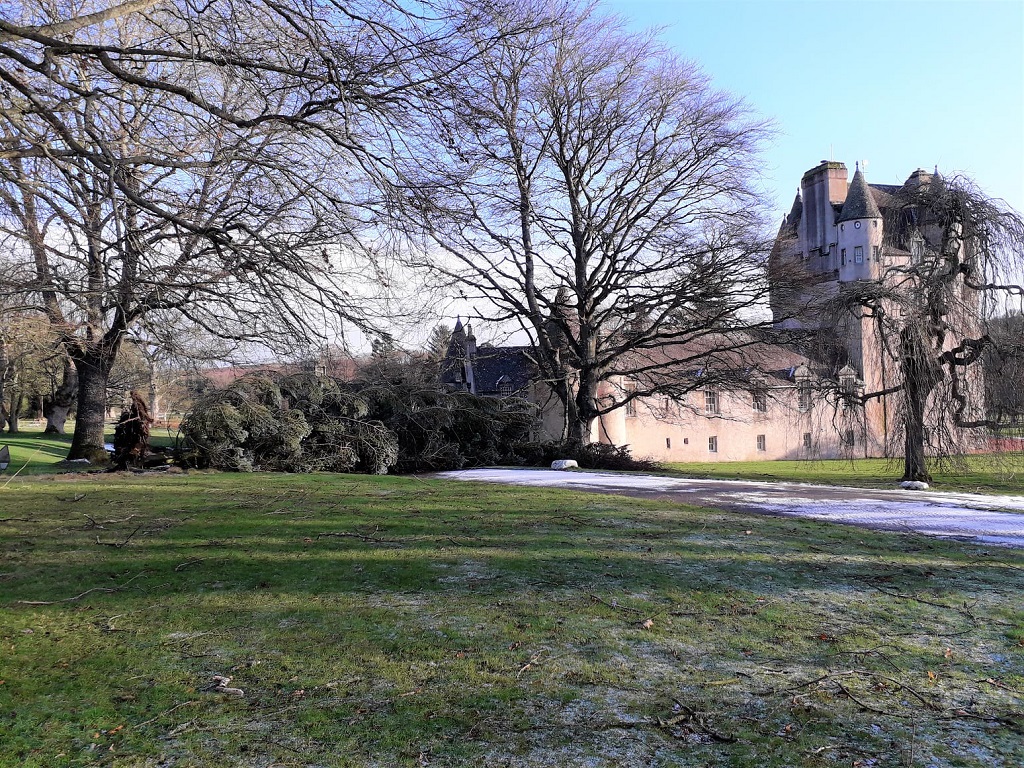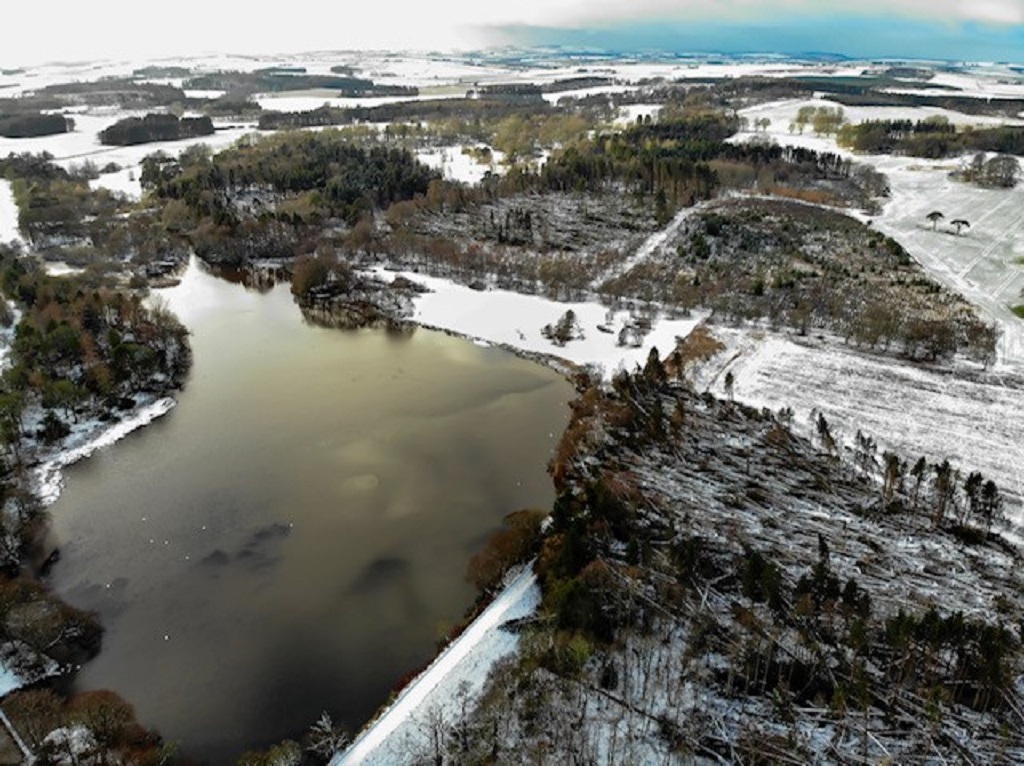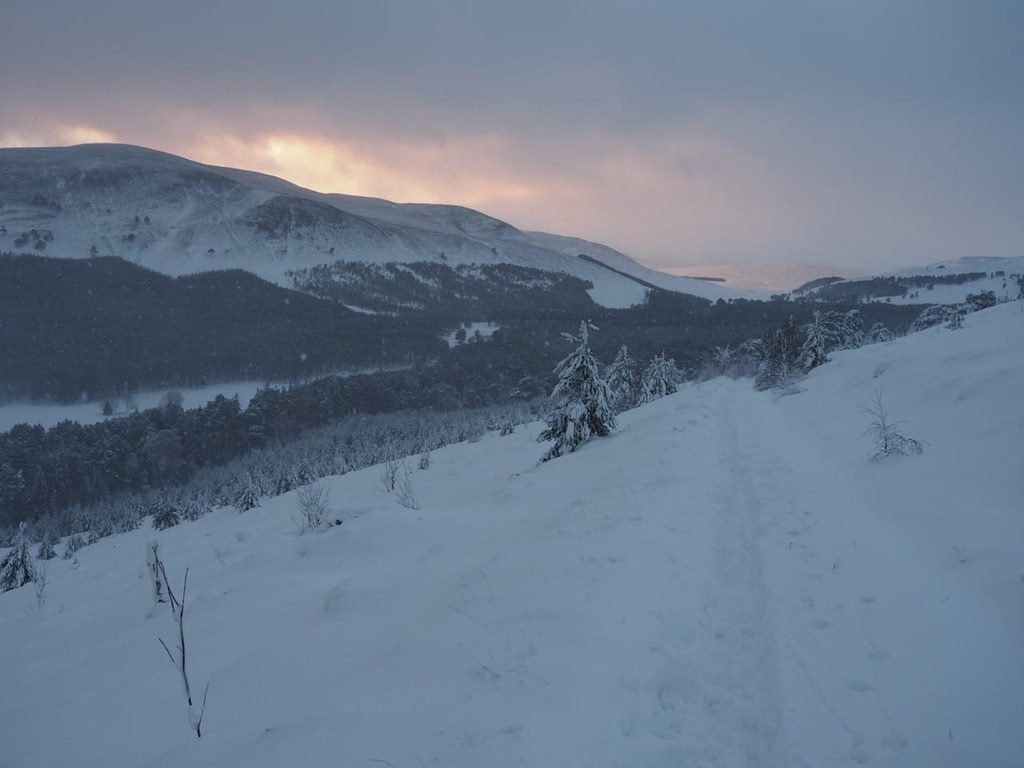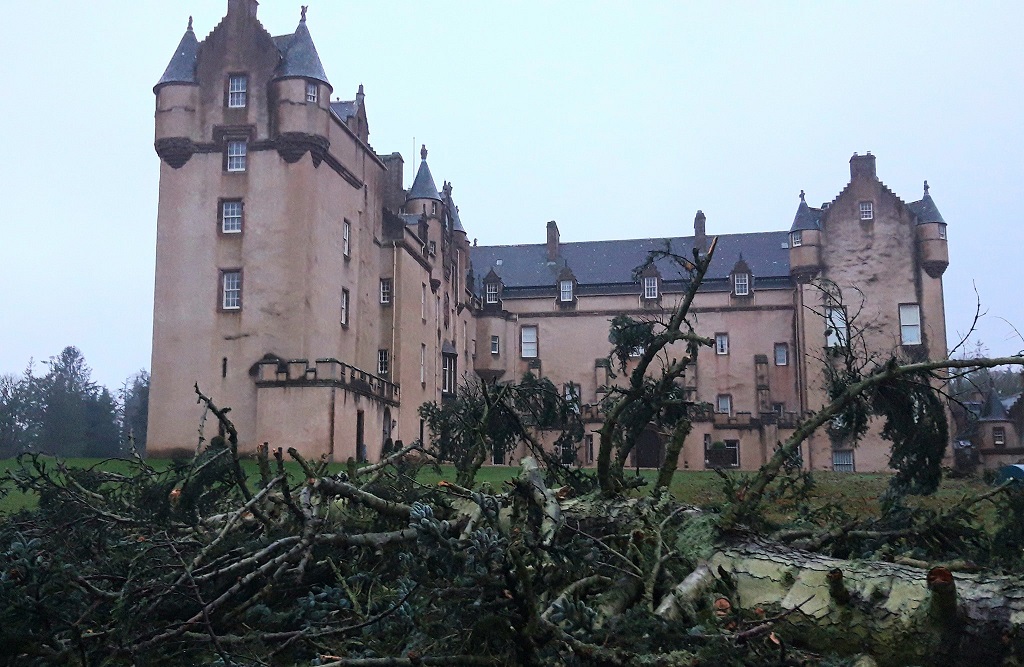Seal pups are among the casualties as Storm Arwen hit Scotland’s shores.
As Scotland recovers from its first storm of the winter, conservation charity the National Trust for Scotland has shared details of the damage caused across many of its places around the country.
The charity that cares for sites from Threave in Dumfries and Galloway in the south west to Fyvie Castle in the north east has seen hundreds of trees felled by the violent winds, infrastructure damaged across the country, and a devastating impact on wildlife, as the storm hit a peak seal-pupping season.
Ranger Ciaran Hatsell is based at St Abb’s Head National Nature Reserve. He said: ‘Very sadly it appears we have lost the majority of our seal pups to this storm. We are planning to do another survey this week to see what the damage is to the rest of the colonies but it doesn’t look good.
‘This is a risk Grey Seals take with their breeding strategy, pupping at this time of year when storms are most frequent. But for this kind of phenomenal storm to hit at the peak of pupping is exceptional.’
A survey carried out just before the storm suggested 2021 was set to be another record-breaking year for seal pups at the Berwickshire site, with 1780 pups counted. Tragically, it is feared that around 800 of these pups died as a result of the storm.
Across the country, many woodlands have suffered and the public are being urged to stay away from some properties until they can be made safe once again. At Castle Fraser, around 200 trees are down and the Pittendreigh wood at Leith Hall has been badly damaged. At Crathes Castle, all estate trails are blocked and it is a similar story at Haddo House and Brodie Castle.
North east gardens and designed landscape manager Chris Wardle said: tThe high winds have blown down many trees on the majority of our north east estates, blocking trails and access tracks, and causing other damage to the trail network and countryside infrastructure.
‘The combination of windblown trees and potentially icy conditions over the coming weeks mean many sites are in a hazardous condition. There is a continued risk posed by hanging trees and branches that may yet be dislodged by further wind and rain – those that have been blown over but have been caught on standing trees. These can be highly unstable and can fall with little or no warning.
‘Windblown trees and damaged roads also prohibit access for emergency vehicles, so we are asking members of the public to help us by staying away for the moment.
- Blown down trees at Castle Fraser
- Damage to trees at Haddo House
- A view of Mar Lodge
- Fallen trees at Fyvie Castle
‘We don’t want anyone risking their personal safety by venturing into the woodlands until such time as we can declare them safe.
‘Priority will be given to tree work on locations that provide an immediate risk to people or property with the focus then shifting to providing essential access for on-site staff, neighbours and tenants.
‘Due to the scale of the issues on many of the north east sites it will take time to clear the damage and we would reiterate the advice from Forestry and Land Scotland to avoid forest walks until we are clear that all dangerous trees have been dealt with in a suitable manner.’
Many places will need specialist forestry support to clear the uprooted trees and loose high-hanging branches. Due to demand on these specialist services, this could take some time.
In the south west, Culzean Country Park and Threave Estate were also hit. Both have lost trees, causing some damage to buildings, including to the 19th century pagoda at Culzean, which has been badly hit.
Meanwhile at the Mar Lodge Estate National Nature Reserve a project to repair its historic Victorian Bridge has been set back due to damage caused by the high winds, meaning work will take longer to complete on this complex conservation project.
Chief executive Philip Long OBE paid tribute to the National Trust for Scotland teams dealing with this difficult and challenging situation.
He said: ‘The National Trust for Scotland teams across the country have made heroic efforts to assess and start repairing damage, as well as reopening our places, where it is safe to do so. Many of our team members have been personally affected, having had no power themselves for several days, and we are indebted to them for all they are doing.
‘Much remains to be done, including emergency work by specialist tree surgeons, repair of infrastructure and, vitally, the replacement of key specimen trees and understanding of the loss to wildlife and their habitats.
‘While the Trust has in place plans to deal with emergency situations, the scale of the damage has been immense and puts a strain on our already stretched charity resources. We will need to divert time and resources away from planned conservation projects as we work to address the damage inflicted.
‘To all those who care about Scotland’s heritage we appeal for your help. Your support will help us continue the essential clean-up and restoration needed, providing funds for work where it is most urgently required.’
Donate at https://www.nts.org.uk/donate.
Some National Trust for Scotland places remain closed, or have limited or restricted access while the clear up continues. Visit www.nts.org.uk before travelling.
TAGS





